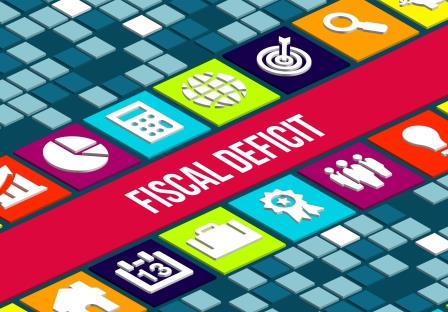
The much-awaited budget for FY21 was presented on 1st February, 2020. The second budget of NDA-2 was presented against the backdrop of a slowing economy. The GDP growth rate for the second quarter of FY20 slipped to 4.5 percent, one of the lowest in the last 26 quarters. The advance estimates of GDP for FY20 places the growth rate at 5 percent, the lowest since the Global Financial crisis. The slowing economy is now accompanied by rising inflation that forced the Central Bank to pause the rate cut in December. December inflation rate stands at 7.35 percent, crossing the upper band of 6 percent fixed by the RBI. With the Central Bank left with little space for further rate cuts, all eyes were on the measures that will be announced in the budget.
In FY20, tax collections were at its subpar level, mainly due to the slowing economy. In addition, the corporate-tax cut has also put a dent on the total receipts of the government. The RBI’s surplus transfer has brought in some relief, but it was not enough in meeting the fiscal deficit target. In this background, fiscal deficit for FY20 was revised from 3.3 percent to 3.8 percent of GDP.
For FY21, the government didn’t go overboard in terms of fiscal deficit, and pegged it at 3.5 percent. However, what needs to be looked into is whether the fiscal deficit target could be achieved, and will there be a fiscal slippage in FY21 also.
By definition, fiscal deficit is the difference between the total expenditure and total receipts of the government. When the total expenditure shoots above the total receipts, Government will be forced to borrow to fill the gap. An increased market borrowing by the government due to a higher fiscal deficit could crowd out private investors.
It is an accepted fact that the 135 bps cumulative rate cuts by the RBI has not been effectively transmitted to the customers. The Central bank even resorted to ‘Operation Twist’ to lower the long-term yields, by purchasing long-term bonds and selling the short-term bonds simultaneously. The aim of ‘Operation Twist’ was to lower long-bond yield to benefit the long-term borrowers. However, the impact of ‘Operation Twist’ will recede once the worry of higher fiscal deficit enters the market.
The financing pattern of the proposed National Infrastructure Pipeline (NIP) also requires a closer scrutiny. It is acknowledged that the country needs more infrastructure investment due to the rising population and rapid urbanisation. However, as per the financing pattern of NIP, of the total cost, 39 percent is shared by the Central government, 39 percent by the state government, and the rest by private players. It means that there will be pressure on the state’s exchequer and increased market borrowing by the state governments.
Thus, the combined fiscal deficit of both the Central and the state government along with the off-budget borrowing of the government would settle at a higher figure. These developments could make money more expensive for the private sector. With the investors on Government bonds getting higher yields, same will be demanded from corporate bonds, resulting in higher borrowing cost for the business.
The rising corporate bond yields would send the private sector to banks for loans. However, the rising NPAs and Asset Quality Review (AQR) by the RBI has made the banks more risk-averse. This is often cited as a major reason for the decline in lending by banks. Additionally, the loans linked with Marginal Cost of funds-based Lending Rate (MCLR) and external benchmark will not see considerable reduction in interest rates in the coming months. For instance, MCLR is closely linked to the movement of deposit rates of banks. Banks are competing with small saving schemes to attract deposits. The interest rates on small saving schemes are linked to government bonds with similar maturities. Thus, with rising fiscal deficit, interest rates on small saving schemes would rise along with bond yields. In such a scenario, the banks will not be in a position to cut the deposit rates, and correspondingly the interest rates on loans linked with MCLR.
Similarly, as per the RBI, the external benchmark can be (i) Reserve Bank of India policy repo rate (ii) Government of India 3-Months Treasury Bill yield published by the Financial Benchmarks India Private Ltd (FBIL) (iii) Government of India 6-Months Treasury Bill yield published by the FBIL (iv) Any other benchmark market interest rate published by the FBIL. In the present scenario, none of the above benchmarks is expected to follow a downward trend.
Access to credit is an important ingredient for investment to take place. The widening of fiscal deficit could make the credit more expensive for private investors that can hurt the economy.









